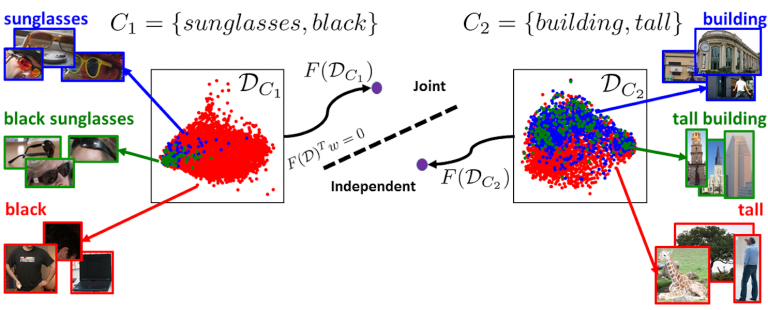Learn How to Choose: Independent Detectors versus Composite Visual Phrases
We propose a predictor that is based on a number of category specific features ( e.g., sample size, entropy, etc.) for whether independent or joint composite detector may be more accurate for a given conjunction.
March 27, 2017
IEEE Winter Conference on Applications of Computer Vision (WACV) 2017
Authors
Guy Rosenthal (Tel Aviv University)
Ariel Shamir (The Interdisciplinary Center)
Leonid Sigal (Disney Research)
Learn How to Choose: Independent Detectors versus Composite Visual Phrases
Most approaches for scene parsing, recognition or retrieval use detectors that are either (i) independently trained or (ii) jointly trained for conjunctions of object-object or object-attribute phrases. We posit that neither of these two extremes is uniformly optimal, in terms of performance, across all categories and conjunctions. The choice of whether one should train an independent or composite detector should be made for each possible conjunction separately, and depends on the statistics of the dataset as well. For example, person holding phone may be more accurately modeled using a single composite detector, while tall person may be more accurately modeled as combination of two detectors. We extensively study this issue in the context of multiple problems and datasets. Further, for efficiency, we propose a predictor that is based on a number of category specifi c features ( e.g., sample size, entropy, etc.) for whether independent or joint composite detector may be more accurate for a given conjunction. We show that our prediction and selection mechanism generalizes and leads to improved performance on a number of large-scale datasets and vision tasks.

